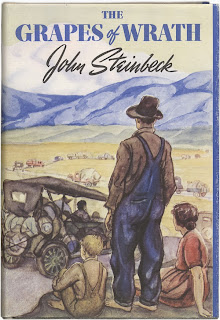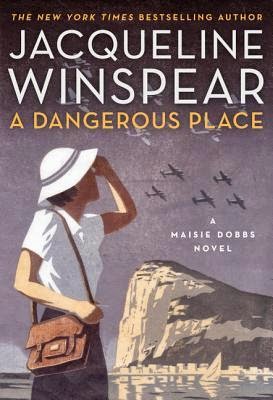from Jacqueline
Even before I ever knew the meaning of “retreat” I
understood what it meant – to withdraw, to go back. For me it meant to go back inside myself, and
I have been doing that since I was a child.
My withdrawing had nothing to do with being a would-be writer – or
perhaps it did. I would always find
myself a place to ponder, to think about my world, sometimes in a big way,
sometimes in small, perhaps insignificant ways.
My first place of retreat was the lilac tree that stood
about ten feet away from the back door of the house I grew up in. It overhung
the narrow footpath that led past the major’s house, before veering left along the
old farm track and out to Robin’s Wood.
The lilac tree was massive, not one of those suburban lilacs that stood
to attention in line outside faux Tudor homes just outside London. No, this
lilac had country roots and seemed to have taken one look at the oak tree and
thought, “I can do that, I can get that big.”
It didn’t quite make it, but its branches were wide enough and snaking
enough to provide a seat for a child with a book, and its fronds formed a
useful camouflage when I didn’t want to be found. I could spend hours in that
lilac tree alone, often just sitting there watching my mother when she went out
into the garden and called my name, always ending that call with, “I’ve got a
job for you.” Who in their right mind
would leave the comfort of the fragrant lilac tree and the gymkhana scene of
Jill Has Two Ponies for sweeping out the grate of the stove in the kitchen? No, it was always best to stay in my tree, my
retreat.
Behind the back door at the top of the stairs between the kitchen and the dining room was another
favorite place. I could pull that door back on myself, and snuggle into the
small space. I could see who came in and out of the back door and when, and
could hear their conversations.
“Where’s
Jackie?”
“Haven’t
seen her all morning.”
“Perhaps
she’s down the woods.”
“Well, the
dog’s still here.”
“I’d better
go and find her then.”
Perhaps my parents knew where I was all the time, because at
that point I would crawl from my place, abandon my retreat and show
myself. “Did you call me?”
As I grew older, retreat became more of a place I went to in
my mind, to the extent that time seemed suspended. At college my friends said I must have a bit
of the Aboriginal in me, because I would go for a walk and not come back for
hours and hours, and it would surprise even me, how long I had walked. My mind seemed to be on a different plane –
no wonder I would be greeted with, “Been walkabout again?” My brother’s the
same – can go off for a walk and get lost in time. Reminds me of something one of my cousin’s
once said, “You Winspears are all a bit fey
I’ve retreated to different places through the years,
finding small guest-houses by the beach, or a quiet hotel just to be on my
own. About fifteen years ago I went on
my first real retreat – a silent retreat at a convent in the mountains near
Santa Cruz. I am of no fixed religion
(though I was loosely raised “C of E” – I remember being in the hospital when I
was six and when my mother filled out the admission form and put my religion as
“C of E” I said, “What’s that?” – “Church of England,” she said. I was a bit miffed – I had not long seen The Nun’s Story on TV, and I wanted to
be in the church of Audrey Hepburn).
The retreat was run by Catholic nuns, but was for
retreatants of any religious persuasion, including complete unbelievers. There was nothing to do except keep your
mouth shut. You could go for walks, come
to the dining hall to eat, or remain in your room. There was spiritual
guidance, if you wished, and there were religious services, if you wanted to
take part. But your time was your
own. I loved the way the nuns walked
around the premises with their big, soft German Shepherd dog at heel. There was something quite calming yet
incongruous about that. But I loved
being there, loved the meaningful silence – and when I drove away it was at a
very slow speed. Time had been suspended
again, and I didn’t want to break its spell.
Coming back into the world after just three days was a challenge – even
the smallest sound reverberated in my ears as if a band were playing. My mind had become used to the silence.
My most profound retreat came a few years later, when I went
to what has become one of my favorite places – The New Camaldoli Hermitage in
the Santa Lucia Mountains, overlooking the Pacific Ocean just along from Big
Sur. This really was retreat, and again,
silence was the order of the day.
Home-cooked meals - all made from produce grown by the monks - were left in the kitchen for retreatants to serve themselves, and then take the meal to their
“cell” – a simple room with a half-bathroom.
If you happened to see someone else on a walk or in the kitchen, you did
not speak. The exception was if you went
to the shop to buy a book or – like me – to indulge in the monks’ amazing
home-made cakes – even then, when making your purchase, you had to keep
conversation minimal if you had a question. And regarding the cake
- those boys know how to ladle in the brandy, that’s all I can say.
The interesting thing about that retreat, more than any
other, was that the silence was so grand, so present and so there with me all
the time. I began to realize that the
everyday noise in my head was a cacophony, crashing around like an orchestra of
baboons doing a warm-up. How could I
ever even think with that racket
going on? Then it began to calm, and I
found the silence I was aching for. At
night, standing in the small patch of yard outside my room, I would sit to look up to
the heavens, where the Milky Way seemed to be putting on a special exhibition
of itself. At once I felt both my insignificance,
and a sense of being part of something miraculous – then
taking that in without self-importance, because at the end of the day I was
just a silent speck. Stardust, yes, but
still dust.
I left the Hermitage at 4:30am on a Monday morning, so I
could be at work on time. Driving along
Highway 1 in the pitch black silence felt comfortable, but of course in time I
had to join the world again – traffic, phones, people, life. At first it was so jarring, like being
pounded by sledgehammers, but soon I was able to touch that place of silent retreat
inside me – the place I found in the lilac tree, and behind the door at the top
of the stairs between the kitchen and the dining room.
I think this season inspires thoughts of withdrawal from the
fray, a hibernation of sorts. And we all
have our places of retreat, don’t we? A
garden, a shed at the end of the yard, a hobby, walks in the forest, our
writing. They key is to be able to find
that place wherever you are – it’s a freedom, of sorts.






























